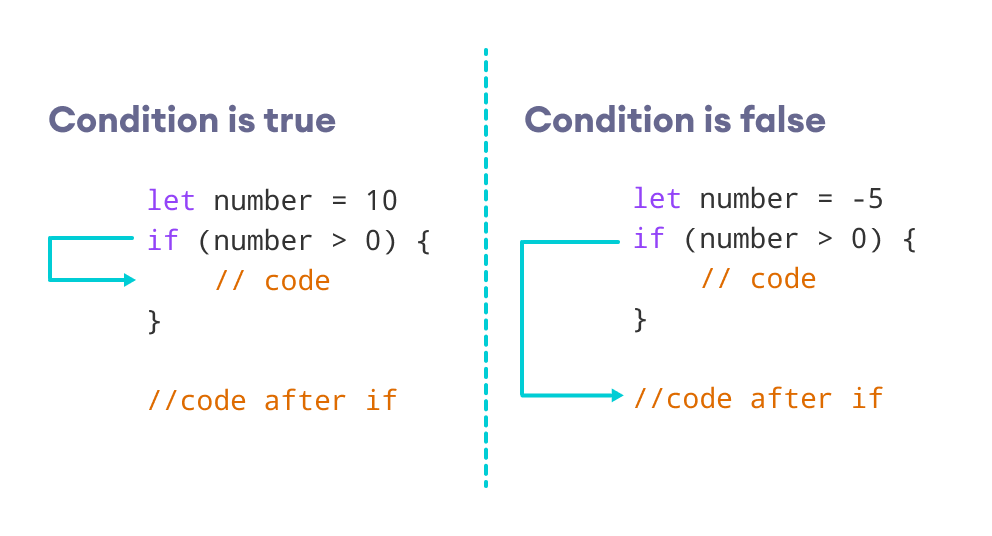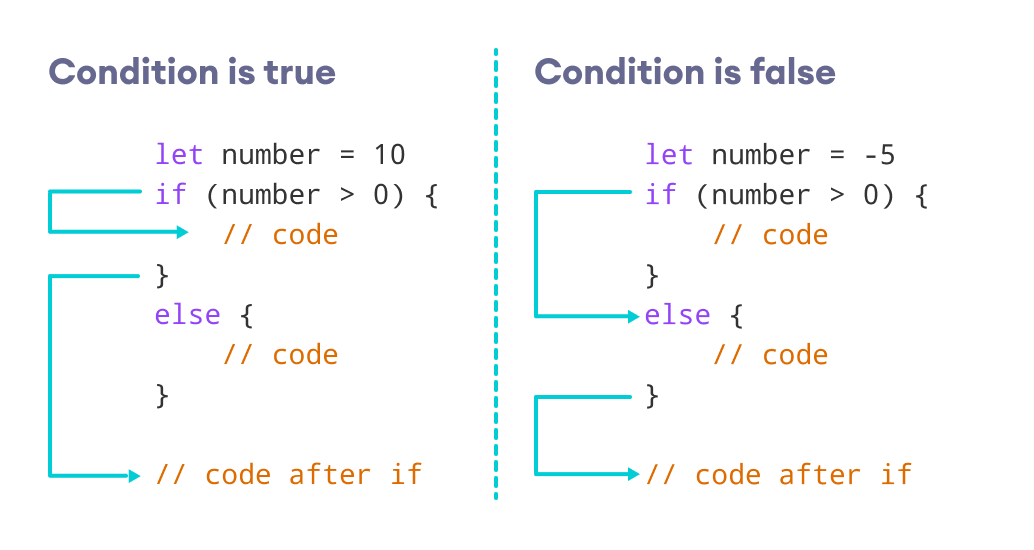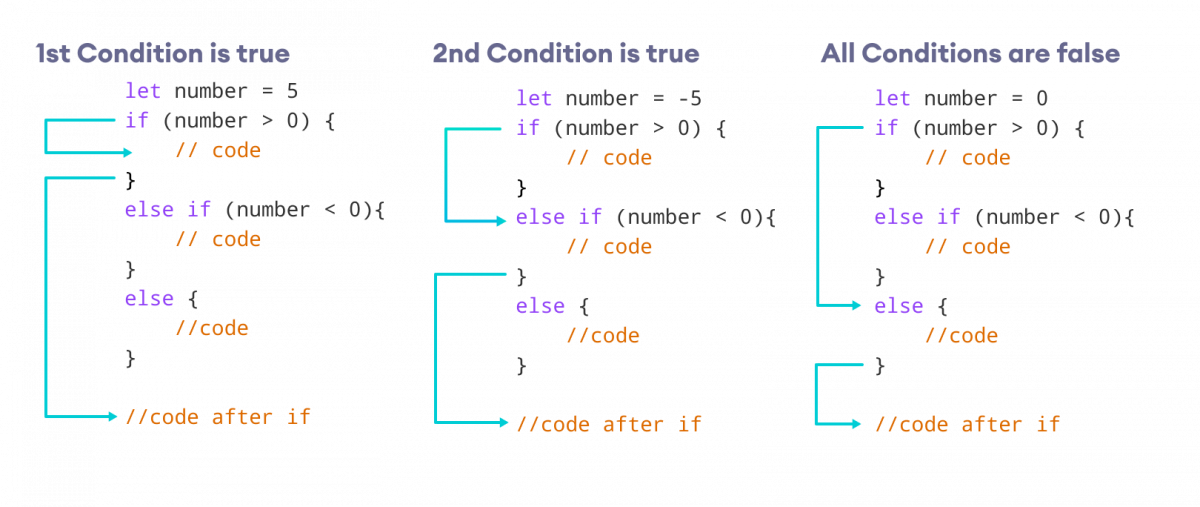In computer programming, we use the if statement to run a block code only when a certain condition is met.
For example, assigning grades (A, B, C) based on marks obtained by a student.
- if the percentage is above 90, assign grade A
- if the percentage is above 75, assign grade B
- if the percentage is above 65, assign grade C
In Swift, there are three forms of the if...else statement.
ifstatementif...elsestatementif...else if...elsestatement
1. Swift if Statement
The syntax of if statement in Swift is:
if (condition) {
// body of if statement
}
The if statement evaluates condition inside the parenthesis ().
- If
conditionis evaluated totrue, the code inside the body ofifis executed. - If
conditionis evaluated tofalse, the code inside the body ofifis skipped.
Note: The code inside { } is the body of the if statement.

Example 1: if Statement
let number = 10
// check if number is greater than 0
if (number > 0) {
print("Number is positive.")
}
print("The if statement is easy")
Output
Number is positive. The if statement is easy
In the above example, we have created a variable named number. Notice the test condition,
number > 0
Here, since number is greater than 0, the condition evaluates true.
If we change the variable to a negative integer. Let's say -5.
let number = -5
Now, when we run the program, the output will be:
The if statement is easy
This is because the value of number is less than 0. Hence, the condition evaluates to false. And, the body of if block is skipped.
2. Swift if...else Statement
An if statement can have an optional else clause.
The syntax of if-else statement is:
if (condition) {
// block of code if condition is true
}
else {
// block of code if condition is false
}
The if...else statement evaluates the condition inside the parenthesis.
If the condition evaluates to true,
- the code inside
ifis executed - the code inside
elseis skipped
If the condition evaluates to false,
- the code inside
elseis executed - the code inside
ifis skipped

Example 2: Swift if...else Statement
let number = 10
if (number > 0) {
print("Number is positive.")
}
else {
print("Number is negative.")
}
print("This statement is always executed.")
Output
Number is positive. This statement is always executed.
In the above example, we have created a variable named number. Here, the test expression
number > 0
Since the value of number is 10, the test expression evaluates to true. Hence code inside the body of if is executed.
If we change the variable to a negative integer. Let's say -5.
let number = -5
Now if we run the program, the output will be:
Number is negative. This statement is always executed.
Here, the test expression evaluates to false. Hence code inside the body of else is executed.
3. Swift if...else if...else Statement
The if...else statement is used to execute a block of code among two alternatives.
However, if you need to make a choice between more than two alternatives, then we use the if...else if...else statement.
The syntax of the if...else if...else statement is:
if (condition1) {
// code block 1
}
else if (condition2){
// code block 2
}
else {
// code block 3
}
Here,
- If condition1 evaluates to
true, code block 1 is executed. - If condition1 evaluates to
false, then condition2 is evaluated.- If condition2 is
true, code block 2 is executed. - If condition2 is
false, code block 3 is executed.
- If condition2 is

Example 3: Swift if..else if Statement
// check whether a number is positive, negative, or 0.
let number = 0
if (number > 0) {
print("Number is positive.")
}
else if (number < 0) {
print("Number is negative")
}
else {
print("Number is 0.")
}
print("This statement is always executed")
Output
Number is 0.
In the above example, we have created a variable named number with the value 0. Here, we have two condition expressions:
if (number > 0)- checks ifnumberis greater than0else if (number < 0)- checks ifnumberis less than0
Here, both the conditions evaluate to false. Hence the statement inside the body of else is executed.
Swift nested if Statement
You can also use an if statement inside of an if statement. This is known as a nested if statement.
The syntax of nested if statement is:
// outer if statement
if (condition1) {
// statements
// inner if statement
if (condition2) {
// statements
}
}
Notes:
- We can add
elseandelse ifstatements to the innerifstatement as required. - We can also insert inner
ifstatement inside the outerelseorelse ifstatements(if they exist) - We can nest multiple layers of
ifstatements.
Example 4: Nested if...else Statement
var number = 5
// outer if statement
if (number >= 0) {
// inner if statement
if (number == 0) {
print("Number is 0")
}
// inner else statement
else {
print("Number is positive");
}
}
// outer else statement
else {
print("Number is negative");
}
Output
Number is positive
In the above example, we have used a nested if statement to check whether the given number is positive, negative, or 0.